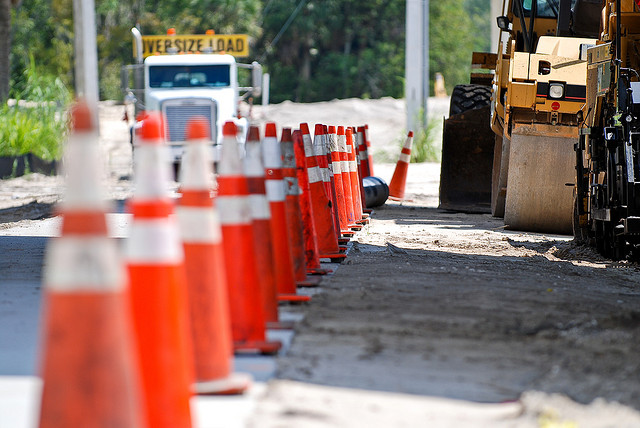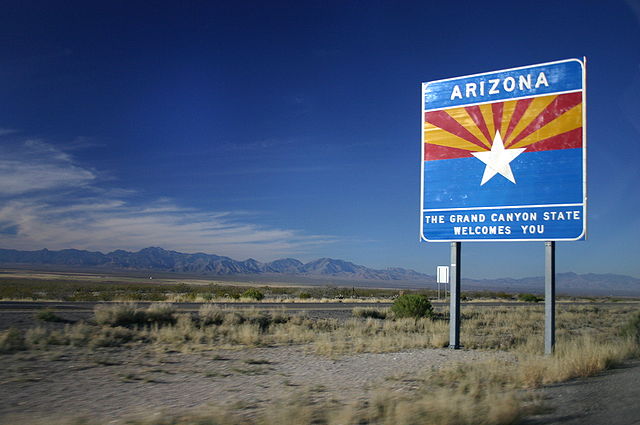
Leo Kolivakis is a blogger, trader and independent senior pension and investment analyst. This post was originally published at Pension Pulse.
Matt Scuffham of Reuters reports, Canada pension funds pull back on infrastructure as prices climb:
Canada’s biggest pension funds say they are walking away from more and more global infrastructure deals, citing concerns that intense competition for assets has driven valuations too far.
The shift could help cool global prices for tunnels, airports, toll roads, energy networks and other infrastructure as Canadian pension plans are among the world’s biggest and most active buyers.
Pension funds’ investment in infrastructure has risen since the 2008 financial crisis, as plunging interest rates and bond yields drove these players to seek steady returns elsewhere. Global equity and commodity turmoil has done little to dampen that interest and intense competition for a limited number of assets has been reflected in recent valuations.
Some investors, particularly in private equity circles, complain that the Canadian funds – dubbed “maple revolutionaries” because of the strategy of direct equity investments they pioneered in the 1990s – have a tendency to overpay.
Senior executives at the leading Canadian funds defend the merits of past infrastructure deals, but say they are worried prices no longer reflect the illiquidity of the assets, which cannot be sold quickly like stocks or bonds.
“The market is overheated. We have stepped out of the bidding for a lot of assets over the last two or three years,” a senior executive at one of Canada’s biggest public pension funds, who declined to be named, told Reuters.
Among recent deals with no Canadian participation, British rail rolling-stock owner Eversholt Rail Group was sold for $3.8-billion (U.S.) to Hong Kong’s Cheung Kong Infrastructure Holdings (CKI).
Canadian funds still expect infrastructure to grow as a proportion of their overall investments because most plans have money rolling in and view infrastructure as a good match for long-term liabilities. But they say want to be more selective.
Canada’s biggest 10 public pension funds have more than trebled in size since 2003 to more than $1.1-trillion (Canadian) in assets. A third of that is now held in alternative assets such as infrastructure, real estate and private equity.
DUMB MONEY?
Four Canadian pension funds now rank among the world’s top 10 infrastructure investors, according to Boston Consulting Group. At the end of 2014 the four funds had $36.8-billion (U.S.) infrastructure assets under management, equivalent to 41 per cent of the total infrastructure assets held by the top 10.
One New York-based investment banker, speaking on condition of anonymity, said private equity firms that have lost an infrastructure auction to a Canadian pension fund often grumble they paid too much, referring to rival bids as “dumb money”.
For example, last year’s acquisition by Canada’s CPPIB and Hermes Infrastructure of a 30 per cent stake in Associated British Ports for about $2.4-billion valued the business at around 20 times earnings compared with multiples of 10 to 12 that investors say are typical for the sector.
But recent prices do not necessarily mean buyers are paying too much said Dougal Macdonald, the head of Morgan Stanley Canada, which has advised on a number of deals involving Canadian pension funds.
“In a low rate environment, target returns across virtually all asset classes have come down. It is simply a resetting of returns for the right assets,” he said.
Canadian pension funds typically look for nominal returns of 6 to 8 per cent from infrastructure, a few percentage points above what they would expect from fixed-income investments. Bankers note that private equity funds often seek returns of 20 per cent or higher, meaning pension funds can afford to pay more.
‘CLUB DEALS’ AND BIDDING WARS
Still, Canadian executives said their funds should avoid being drawn into bidding wars as part of competing consortia.
“You’ve got to try and avoid auctions because they can get crazy. If you’re just walking around with an open cheque book in these markets you’re going to pay too much,” said another executive with one of Canada’s three largest pension funds, who declined to be named because of the sensitivity of the issue.
The executive said Canada’s largest funds should co-operate more frequently. However, such “club deals” remained rare for the top three – the CPPIB, the Caisse de dépôt et placement du Québec and the Ontario Teachers’ Pension Plan.
In the past they often found themselves competing against each other as well as foreign rivals that include South Korea’s National Pension Service, Dutch pension fund APG, Australia’s Future Fund, private equity and some sovereign wealth funds.
Among recent deals, New South Wales Premier Mike Baird hailed a “stunning result” for the Australian province after a consortium including the Caisse agreed to pay $7.5-billion for an electricity network last year, significantly more than analysts expected.
The group had seen off competition from other investors including the CPPIB and a unit of another Canadian pension fund. The Caisse said at the time it was confident the acquisition met its investment objectives.
Canadian funds are also involved in a takeover battle for Australian port and rail giant Asciano AIO.AX, with Brookfield Asset Management BAMa.TO bidding against a consortium that includes the CPPIB.
Asciano’s shares are trading below both groups’ offers but at 34 times their earnings still look expensive compared with its nearest rival Aurizon, valued at 13 times its earnings.
“There’s a lot of money chasing assets,” an executive at an Ontario-based fund said. “The important thing is to maintain our discipline”.
None of this surprises me. Three years ago, I openly asked whether pensions are taking on too much illiquidity risk and whether their collective search for yield is inflating an infrastructure bubble.
In April of last year, Ontario Teachers’ CEO Ron Mock sounded the alarm on alternative investments stating: “There’s a lot of money crowded into the broadly defined alternatives space. We find it too expensive. It’s time for us to step back.”
I want you to all remember my rule of thumb, when everyone is doing the same thing, paying outrageous prices for liquid or illiquid investments, or investing in the hottest hedge funds or whatever hot new strategy or theme investment banks are peddling, it typically means lower returns ahead.
Call it the law of unintended consequences. When I was working at PSP back in 2005, I sent a Fortune article to the president and senior management which discussed why Tom Barrack, the king of real estate was cashing out. I specifically highlighted this quote, which remains my favorite investment quote of all-time: “There’s too much money chasing too few good deals, with too much debt and too few brains.”
That didn’t exactly win me any friends over in the Real Estate department where the then head of Real Estate at PSP, André Collin, was fuming but I couldn’t care less as my job wasn’t to coddle people, it was to warn them about risks lurking ahead (something Gordon Fyfe never fully appreciated and ended up regretting).
That same year, I flew over to London to attend some Barclays conference on commodities and came right back to Montreal to work on a board presentation arguing against commodities as an asset class (too many investment banking cheerleaders peddling BRICS and commodities at that conference) .
The investment bankers didn’t like me a lot as I made them do a lot of grunt work and finally decided against recommending commodities in PSP’s portfolio. Mihail Garchev who is still at PSP helped me look at the numbers and it just didn’t make sense. That decision alone saved PSP billions in losses.
Unfortunately, at the time, PSP was taking all sorts of stupid risks in its credit portfolio, including selling CDS and buying ABCP. In the summer of 2006, I looked at the issuance of CDOs and CDO-squared and cubed products, and warned PSP’s senior managers of the bursting of the U.S. housing bubble and how it will wreak havoc on credit markets, but nobody took my dire warnings seriously (to be fair, some were worried too and nobody had any idea how bad things would get).
In fact, I remember calling people at Goldman to discuss ways we can short ABX (an index of subprime debt) and this made them somewhat nervous: “Why would you want to do that? The U.S. housing market is great. ” (felt like saying “because I don’t trust you guys and I don’t want you to question me, just tell me if you can do it and how much it will cost us!”. But nothing came out of this because PSP’s management decided not to hedge our credit risk back then).
I wrote about that experience here and how it cost me my job here. Anyways, that’s all ancient history now but all this to say when everyone is doing the same thing, following the crowd, listening to their trusted investment bankers peddling them hot investment ideas, it typically doesn’t end well.
There are booms and busts in everything. That goes for public markets and private markets. You’ll have cycles and typically dumb money is on a feeding frenzy when you’re at the top of the cycle.
Now, as far as infrastructure, there’s no question it’s an important asset class. I know, I worked with Bruno Guilmette, PSP’s former head of infrastructure, on the board presentation to introduce that asset class at PSP back in 2005.
The best way to think of infrastructure is as an investment similar to real estate but with a much longer investment horizon, providing steady cash flows (yield) over a very, very long time. Typically infrastructure investments yield returns in between stocks and bonds over a very long period.
Why do pensions love infrastructure? Because pensions need to match assets with liabilities and with rates at record lows and likely staying ultra low for years, they need to find a relatively safe, secure and scalable substitute to long bonds which aren’t yielding enough to match their long dated liabilities which go out 75+ years (there’s a duration mismatch with long bonds and yields are too low).
And when you’re a big Canadian pension fund, you’re not going to invest in an infrastructure fund, you’re going to invest huge sums directly. Unlike private equity which is almost exclusively, if not exclusively, done via fund investments and co-investments, all of Canada’s Top Ten invest in infrastructure directly (same with real estate but there are also a lot of fund partnerships in that asset class).
The problem is when everyone is looking to find prize infrastructure assets, things get expensive because everyone is playing the bidding game. This is what the article above discusses. Note how many “senior executives” are complaining publicly to that reporter, off the record of course.
Still, there have been some interesting deals lately. For example, Borealis Infrastructure, an investment arm of OMERS and arguably one of the best infrastructure investors in the world, just bought a 24.15% stake in Spain’s largest operator of oil storage facilities and pipelines:
Borealis Infrastructure – part of the OMERS pension system – is acquiring a 9.15% stake in Compania Logistica de Hidrocarburos, or CLH, from Cepsa and a 15 stake from Global Infrastructure Partners.
Financial terms of the two deals were not immediately available.
CLH, Borealis Infrastructure’s first investment in Spain, expands the pension fund manager’s European infrastructure portfolio which already includes investments in the United Kingdom, Germany, Sweden, Finland and the Czech Republic.
CLH has 40 storage facilities and 4,000 kilometres of pipelines in Spain. The company also has 16 storage facilities and more than 2,000 km of pipelines in the United Kingdom.
Back in November, CPPIB, OMERS and Ontario Teachers’ bought a stake in a Chicago toll road:
Three Canadian pension funds have signed a deal to buy the company that operates the Chicago Skyway toll road for US$2.8 billion.
The Canada Pension Plan Investment Board, Ontario Municipal Employees Retirement System and Ontario Teachers’ Pension Plan will each hold a one-third stake in Skyway Concession Co. LLC, which runs the toll road under a concession agreement that lasts until 2104.
The Skyway runs 12.5 kilometres and connects the Dan Ryan Expressway to the Indiana Toll Road.
Skyway Concession, owned by Cintra Concesiones de Infraestructuras de Transporte S.A. and Macquarie Atlas Roads and Macquarie Infrastructure Partners, took over operations of the toll road in 2005 under a 99-year deal for US$1.83 billion.
The company is responsible for all operating and maintenance costs of the Skyway, but has the right to all toll and concession revenue.
The deal is subject to regulatory approvals and customary closing conditions.
As you can see, there of plenty of deals going on but things might be getting frothy and with risks of deflation and a global slowdown looming, I guess a lot of infrastructure investors are scrutinizing the multiples they pay on these investments a lot more closely.
And while many are cooling off on infrastructure, some are even selling assets. AIMCo just announced the sale of Autopista central toll road in Chile:
Alberta Investment Management Corporation (“AIMCo”) is pleased to announce the successful divestment of its 50% interest in Autopista Central de Chile, a Santiago-based toll road infrastructure asset, on behalf of certain of its clients, to Abertis Infraestructuras SA (“Abertis”) for € 948 million (approximately CAD 1.5 billion).
The sale of Autopista Central represents the culmination of a very successful private investment for AIMCo and a demonstration of its ability to manage this unique asset through the investment life cycle. This mutually beneficial transaction further provides a unique opportunity for Abertis to consolidate its interests under its Chilean Road Portfolio, furthering its current strategy.
Autopista Central is a 61-kilometer, six-lane highway in Santiago that went into operation in 2007. AIMCo acquired a 50% stake in Autopista Central de Chile in December 2010, on behalf of certain of its clients, joining a consortium of companies with 100% ownership of Autopista Central SA unit, a Santiago-based provider of toll roads operations services. The consortium, now solely-owned by Abertis, holds the concession until 2031.
“AIMCo has enjoyed working with the strong management team of Autopista Central and our partner Abertis over the last five years,” says Ben Hawkins, Senior Vice President, Infrastructure & Timberlands at AIMCo. “Autopista Central has one of the best management teams in the industry, and the acquisition will allow Abertis to achieve further synergies and benefits to its portfolio. We are happy to have been an owner of this important piece of infrastructure to Santiago, and remain committed to investing further in Chile given the right opportunities.”
AIMCo Chief Executive Officer, Kevin Uebelein, states further, “Today’s transaction realizes excellent gains for AIMCo’s clients. Our talented and capable team of Infrastructure investment professionals maximized the value of this asset through each stage of the investment lifecycle as evidenced by this outcome.”
I will leave you with something AIMCo’s former CEO Leo de Bever shared with me via email earlier today on this topic:
When I was at Ontario Teachers, we were one of the first Canadian funds to start investing in infrastructure. The market was inefficient, and we probably made more money than we should have because as others followed suit, prices started to rise.
With the rapid growth of pension and sovereign wealth funds, the money is piling into this asset class faster than the supply of good investments. Some of the new investors are seeking top line yield without factoring in risk. The biggest risk of infrastructure is political and contractual: whenever there is a dispute between a few investors and a lot of taxpayers or users, the investors are in danger of losing out. With publicly owned infrastructure, that cost is just quietly absorbed.
Reliability of contracts and concession provisions are key to attracting capital on good financial terms. With interest rates low, target returns of 6% to 8% may look like a king’s ransom, but pricing infrastructure as a risk free bond makes little sense, because it ignores efficiency of capital use and operating risks. The unit cost of capital on many publicly financed projects may be low, but in many cases they end up having to raise a lot more dollars. Some of the best projects I never financed ended up badly for that reason.
Most government owned social infrastructure has been underpriced for decades because of the political pressure to keep user rates low, resulting in a lot of deferred maintenance and no provision for capital replacement. It seems that we need bridges falling down and water pipes bursting before we make that connection.
There should be a growing opportunity for pension funds to fund new infrastructure, as governments look for more efficient ways to deal with these issues. I have been surprised that this is not happening faster.
The main reason seems to be that no one is held accountable for the social opportunity cost of deficient infrastructure caused by congestion, grid failure, and water pollution from poor sewage treatment capacity planning. I see this as one of the factors holding down future GDP growth potential.
Canada’s federal government is embarking on a big infrastructure build program. That could be great, and is long overdue, assuming it targets the right investments. We should think carefully about not just building more of what we already have. The future may need different facilities, reflecting, for example, what I see as a trend to more distributed production of energy, and more emphasis on decentralized ways to improve efficiency of water use and treatment.
Smart guy that Leo de Bever and you’ll recall the ‘godfather of infrastructure’ was warning investors of how expensive infrastructure was getting back in July 2010 when he stated the following:
“I did a fair bit of the early infrastructure stuff among Canadian pension funds,” he said. “And in the beginning you could get an honest 14 per cent return on equity because the market was very inefficient.” To do the same thing these days, with a number of players competing for deals, would take a whole pile of leverage, he suggested.
But ended with this comment:
“In most places, water and sewage are going to take an enormous amount of capital because everything is starting to leak,” he said. “Given that the fiscal positions of a lot of these governments is pretty weak, private capital has to come in at some point, and that’s when I think infrastructure will become attractive again.”
So while Canada’s big pensions are cooling on infrastructure, it doesn’t mean they’ve written this asset class off entirely. Quite the opposite, they still invest heavily in infrastructure but are scrutinizing deals a lot more carefully.
It’s also worth noting that some funds, like the Caisse, are taking on greenfield infrastructure projects in Quebec. While some are questioning whether it can make money on these projects, I’m very confident it will do just fine (the Caisse hired the right people to oversee these greenfield projects).
Photo by Kyle May via Flickr CC License










